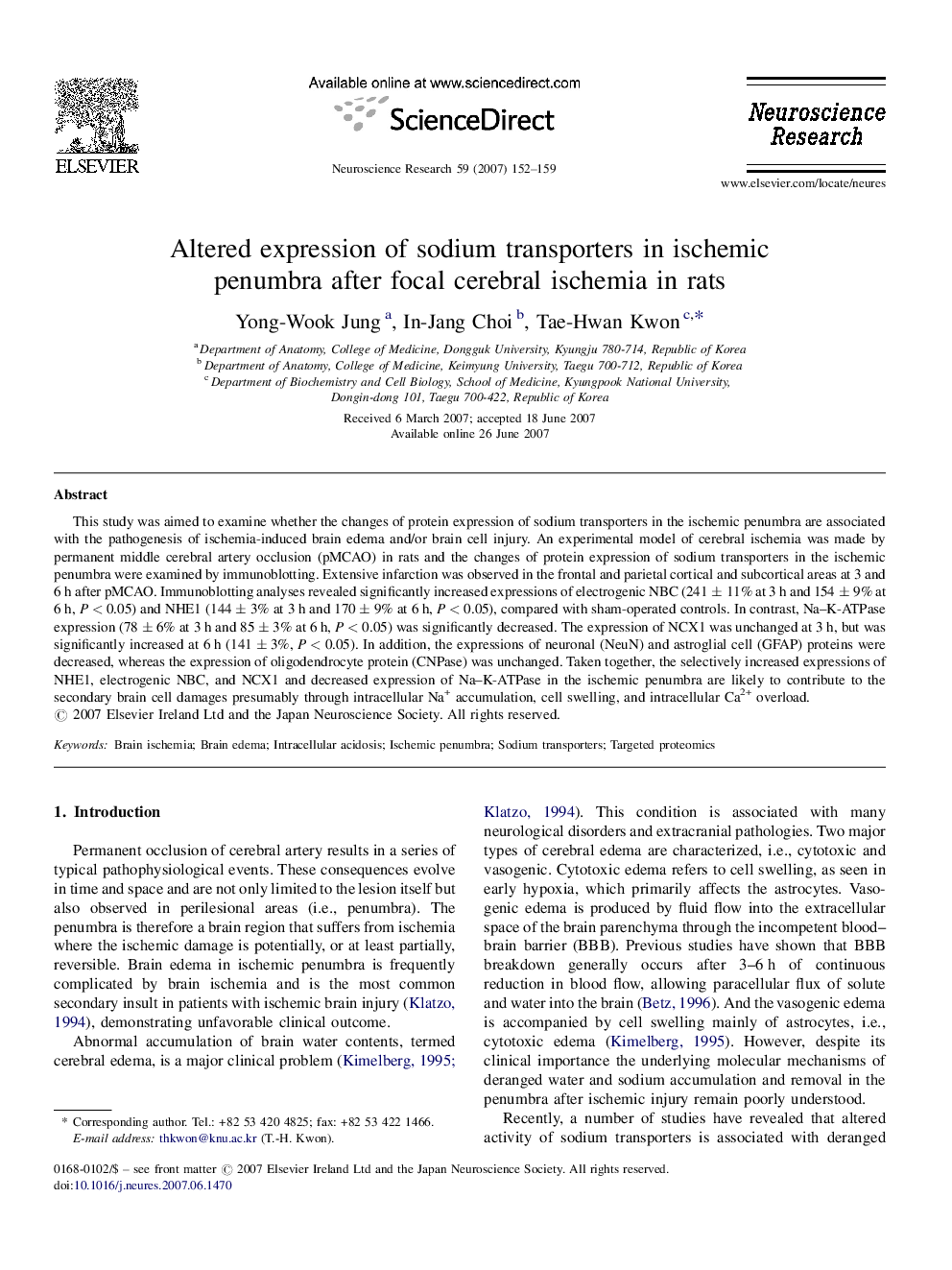| Article ID | Journal | Published Year | Pages | File Type |
|---|---|---|---|---|
| 4352501 | Neuroscience Research | 2007 | 8 Pages |
Abstract
This study was aimed to examine whether the changes of protein expression of sodium transporters in the ischemic penumbra are associated with the pathogenesis of ischemia-induced brain edema and/or brain cell injury. An experimental model of cerebral ischemia was made by permanent middle cerebral artery occlusion (pMCAO) in rats and the changes of protein expression of sodium transporters in the ischemic penumbra were examined by immunoblotting. Extensive infarction was observed in the frontal and parietal cortical and subcortical areas at 3 and 6 h after pMCAO. Immunoblotting analyses revealed significantly increased expressions of electrogenic NBC (241 ± 11% at 3 h and 154 ± 9% at 6 h, P < 0.05) and NHE1 (144 ± 3% at 3 h and 170 ± 9% at 6 h, P < 0.05), compared with sham-operated controls. In contrast, Na-K-ATPase expression (78 ± 6% at 3 h and 85 ± 3% at 6 h, P < 0.05) was significantly decreased. The expression of NCX1 was unchanged at 3 h, but was significantly increased at 6 h (141 ± 3%, P < 0.05). In addition, the expressions of neuronal (NeuN) and astroglial cell (GFAP) proteins were decreased, whereas the expression of oligodendrocyte protein (CNPase) was unchanged. Taken together, the selectively increased expressions of NHE1, electrogenic NBC, and NCX1 and decreased expression of Na-K-ATPase in the ischemic penumbra are likely to contribute to the secondary brain cell damages presumably through intracellular Na+ accumulation, cell swelling, and intracellular Ca2+ overload.
Related Topics
Life Sciences
Neuroscience
Neuroscience (General)
Authors
Yong-Wook Jung, In-Jang Choi, Tae-Hwan Kwon,
